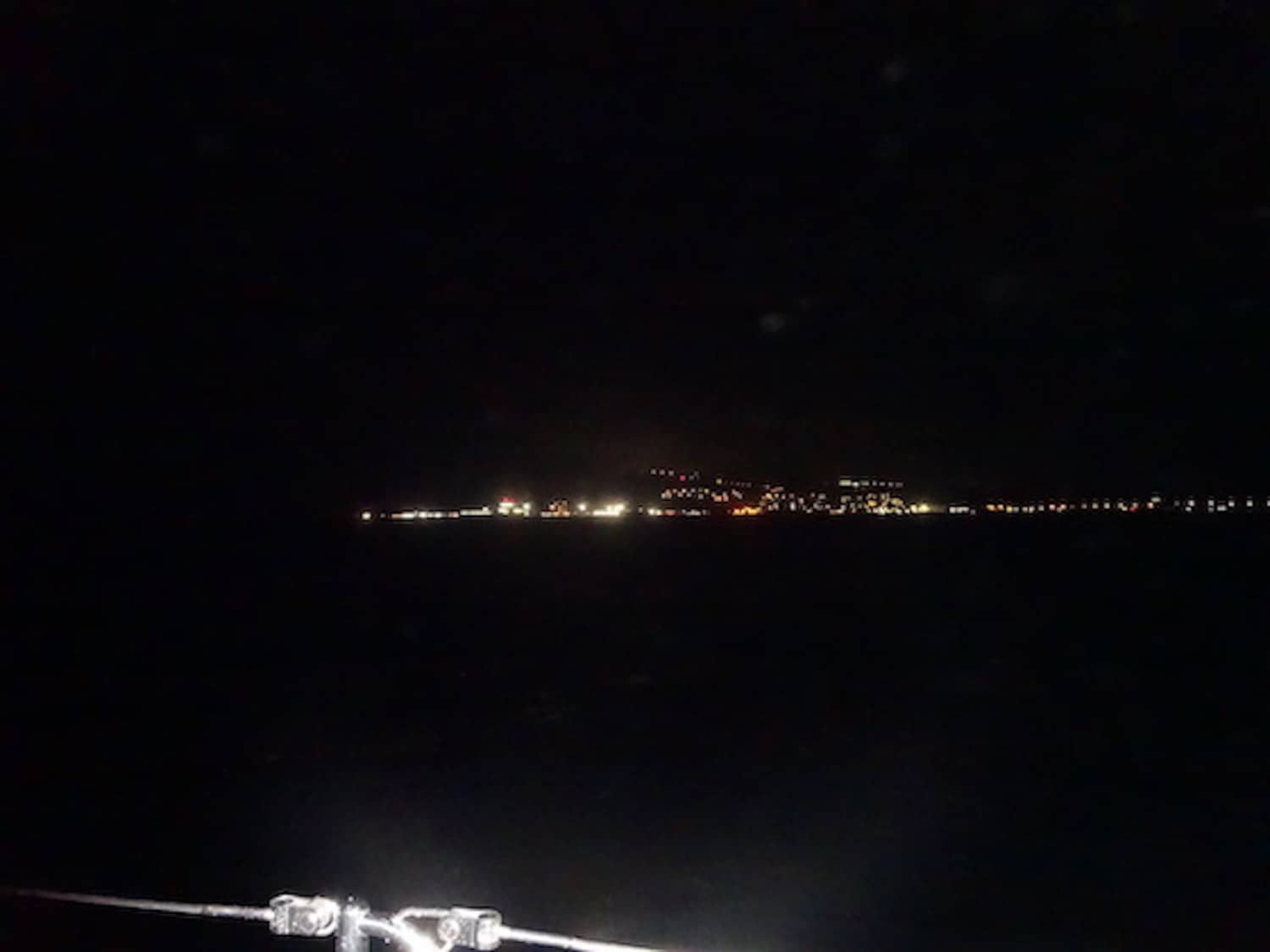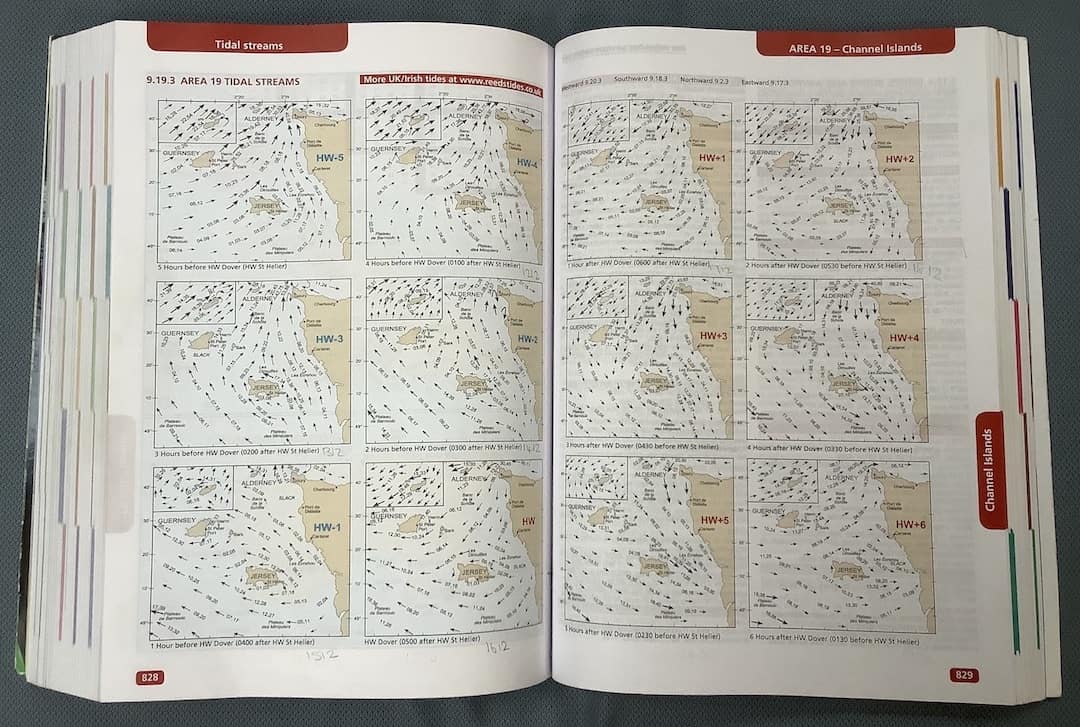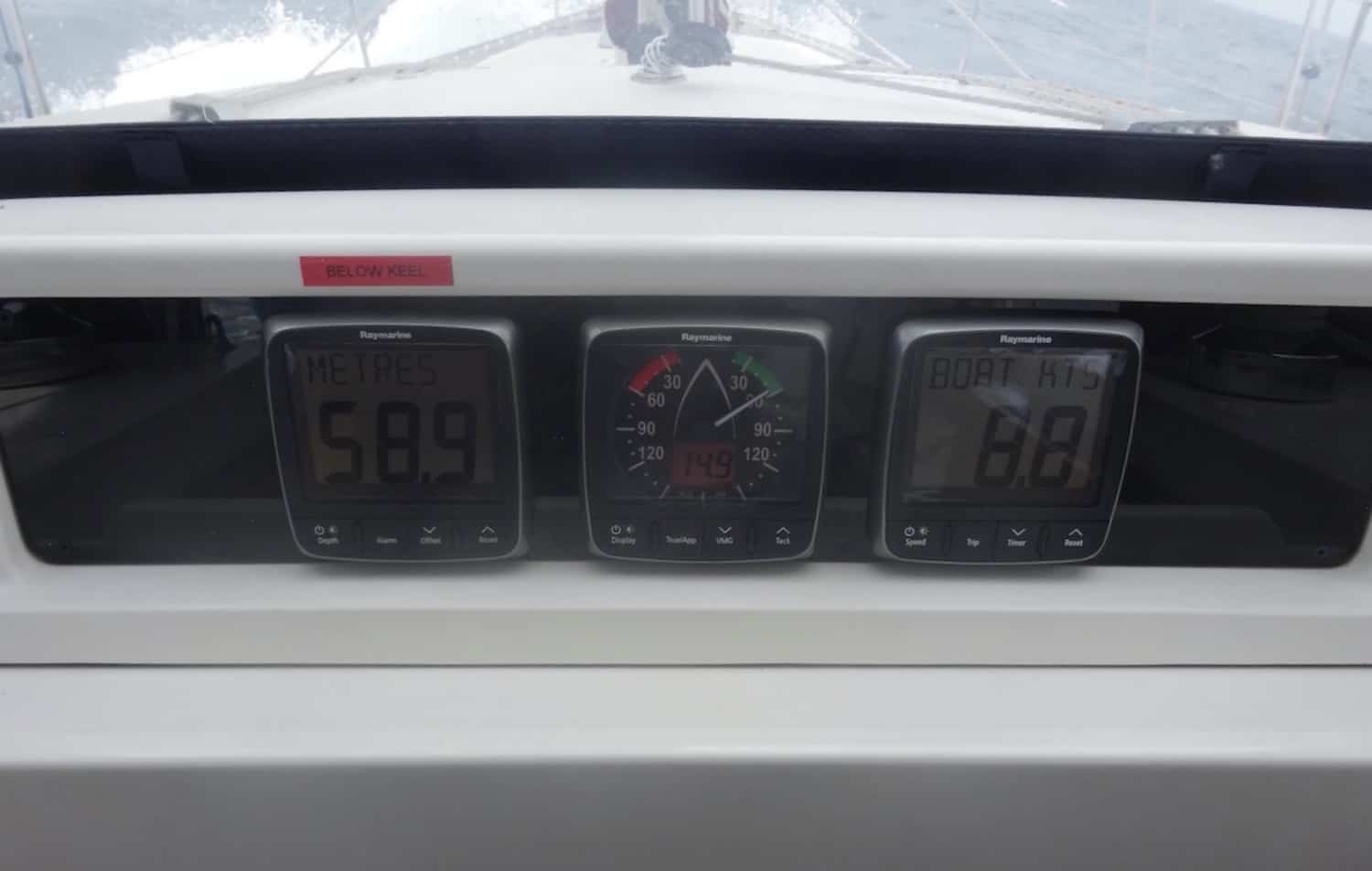After years of planning and preparation, the time had finally come to leave the UK!
This would be our longest sail yet: From Portland to Jersey, a total of about 100 miles taking us around 20 hours. It would entail crossing the English Channel with its busy shipping lanes and negotiating the fast tidal flows of the Alderney Race. All exciting stuff!
We checked through the information we had, using the Shell Channel Pilot, Reeds Almanac and the various weather and routing apps we have (Windy, PredictWind and LuckGrib). We knew that the main thing to plan for was to ensure that we reached the Alderney Race for the tide to be with us. We calculated that this meant a night departure from Portland.
All boat checks done, we went to bed for a couple of hours sleep, setting our alarms for 1130pm. After a quick cup of coffee, we were off.
Not only was it dark, but it was drizzling too. Not a pleasant start to our crossing.
The winds were Force 4 (11-16 knots), but unfortunately not in our favour. They were coming from the south east (exactly the way we were wanting to travel). We could have tacked our way to the first waypoint, but this would have added considerable miles and time to our journey. Reluctantly, we chose to motor.

Once on course for our first waypoint, we started our night shifts. As usual, I was a little too nervous to sleep, so Martin took first sleep. I settled into the rhythm of the boat, motoring the wind strength and direction and keeping a look out for navigational markers and, of course, other boats. We continued to motor sail and I had time to listen to a couple of podcasts and improve my Spanish.

By 7am, we were both awake. It was now light and we had arrived at the edge of the TSS (Traffic separation Scheme). We had also managed to put the sails out as the wind was now easterly. Unfortunately, it had dropped to Force 3 (7-10 knots), so we kept the engine on to keep our speed up. No one wants to be bobbing around in the shipping lanes!
Crossing the TSS is exactly like trying to cross a busy road between the traffic. We have AIS (Automatic Identification System) tracking, so any vessel transmitting a signal (all the large ones do) comes up on our chart plotter. We can then check its details: dimensions, destination, speed and most importantly how close it will get to us and when. This then gives us chance to decide on a course of action. There are ‘rules of the road’ (COLREGS – International Regulations for Preventing Collisions at Sea) governing who should do what, but when dealing with enormous tankers going at over three times our speed, these tend to be more flexible.
The AIS also gives us the vessel’s MMSI (Maritime Mobile Service Identity) and we can use this to radio them. Martin radioed one ship. He was on the ball and had already seen us on AIS. He confirmed that he would be passing behind us and wished us a pleasant sail.
Once through the TSS, our next challenge was the Alderney Race. This is a strait that runs between Alderney (Channel Islands) and Cap de la Hague at the north western tip of Normandy. A strong current runs through here and, when the wind and race current flow in opposite directions, the sea can become chaotic, with waves reaching up to 4m. Also, the flow can be up to 12 knots which, which when you consider that usually we travel at 5/6 knots, means if we get it wrong, we would be going backwards!
Luckily, the forecast for the day was for slight winds, so we only had to worry about the timing of the flow. We planned to get north of the Race before it turned in our favour. For once, our timing was good, arriving at our waypoint an hour early. Time for a cup of tea and a gentle drift.
When setting off, the flow rate was about 3 knots. This increased our boat speed to over 8 knots, making for a quick passage towards Jersey.


The last part of the journey was the 50 miles from Alderney to Jersey.
The wind was still only Force 3 (7-10 knots), but now generally westerly. We continued to motor sail south towards Jersey.
After two hours, the wind picked up to Force 5 (17-21 knots) and, at last, we could turn off the engine. We had a brisk sail down to the south coast of Jersey.
We finally arrived at St Helier at 7pm, perfect to cross the sill into the marina.
We had made it – 115 miles, 19 hours and our first new country!
Congratulations and well done. Now you are properly away. Thoroughly recommend Bistro Rosa by the fish market. Had some very friendly meals there.
Hi Will,
Thank you. We are so pleased to have finally left.
Thanks for the recommendation. We have actually left Jersey now (the blogs are a little behind real time), but will bear it in mind for next time.
I see that you are now booked on World ARC 2023. We are on that too, so hopefully will catch up in person some time.
Sail sailing
Super write up. Love the islands. Have not been there for over 30 years. We are sat in Wales in our new caravan in the first of 3 holidays we are having in the uk. Moving from here into North Devon and finishing the summer in Yorkshire. Great to read about your exploits. X
Hi,
Great to hear from you.
Pleased that have managed to get away and the first of three holidays…makes it all worth while, getting away from the daily grind. Hope the weather is kind to you.
Take care all
x
Excellent first long trip Caron as usual your description leaves nothing to the imagination, having trouble finding you on boat app? Only getting last known position not when your at sea?
Enjoy your endeavours xx
Hi,
Thanks for your comments. Pleased it is not too boring to read!
The app works on AIS on radio signals, so it will only work when we are within distance of a transmitter/receiver. Also if we have it turned off in a marina, you will get the last known position too. When we go across the Atlantic we will have a different tracker which works on satellites, so that will track us better off shore.
XX
Well done! No wonder you needed time to learn all these intricacies of sailing.
Hi,
We are certainly putting things in to practice now! But still learning more every day too.
Take care x
My head spins when I read about all that you have to think about sailing a boat! Thank goodness you know what you are doing! Stay safe and afloat!!
Hi,
Am so pleased we sound like we know what we are doing…it doesn’t feel like it sometimes!!
Sounds amazing Caron.
Loving the updates. Your adventure is so exciting – enjoy.
Enjoy the Caribbean.
Hi,
Great to hear from you. Hope you are well. Have you retired yet??
So pleased that you are enjoying the posts. They are a little behind real time, so we are actually in A Coruna, Spain at the moment. And it definitely is all very exciting!!
Take care x
Fantastic to hear the adventure has begun, looking forward to the next instalment.
Hi all,
Great to hear from you. Hope you are all well and planning some adventures of your own.
We are well on our way, as currently in A Coruna, Spain. My Spanish is improving!!
Take care
xx